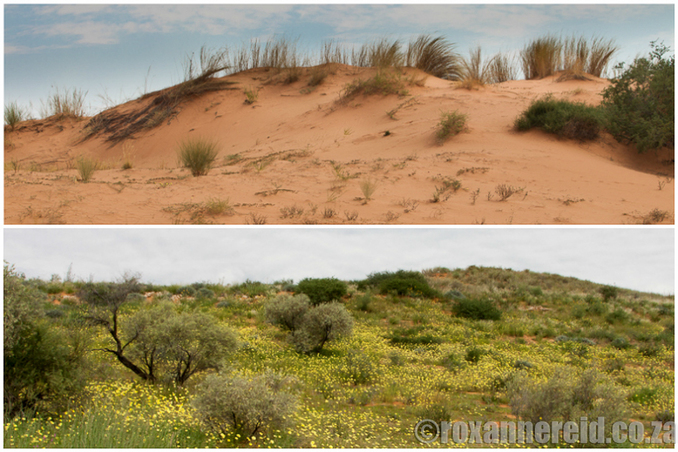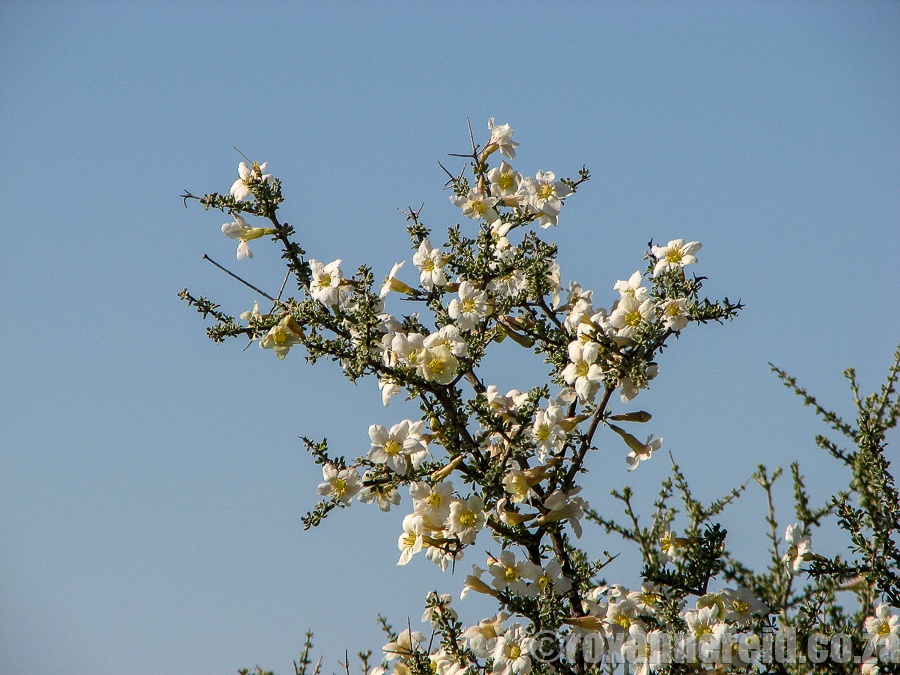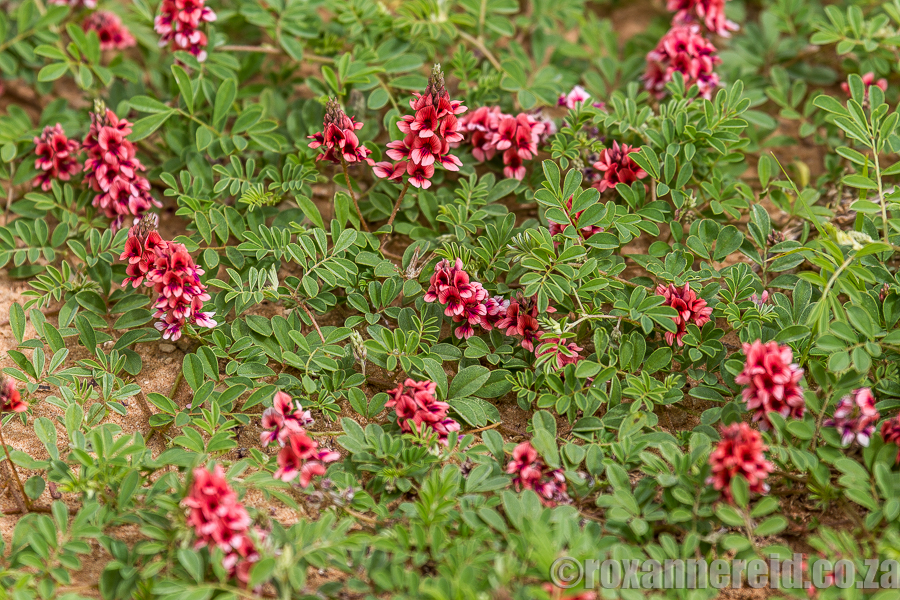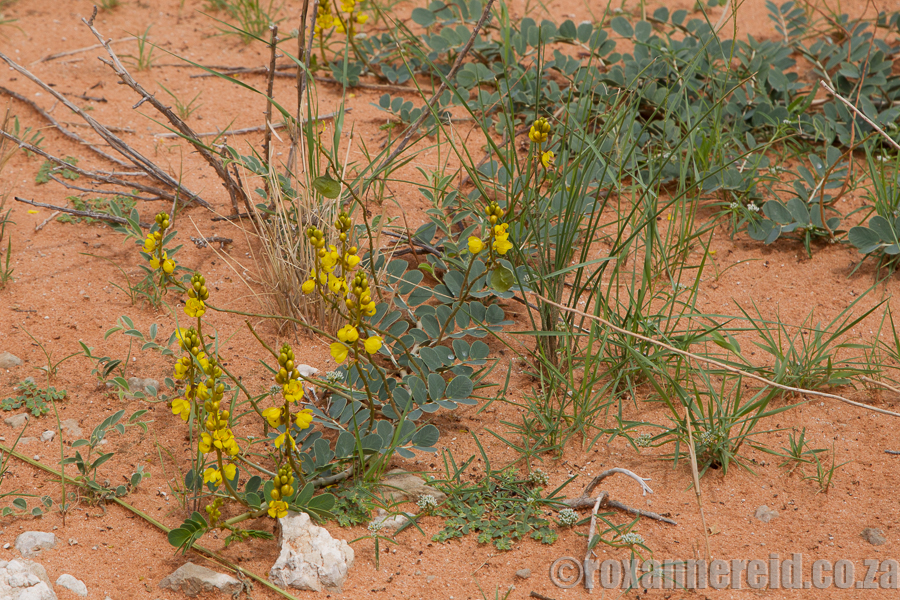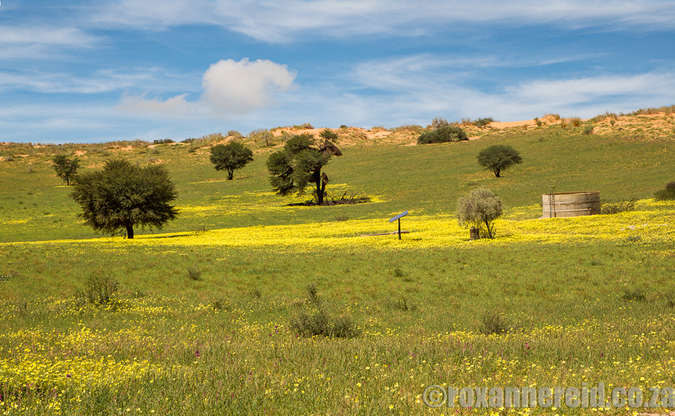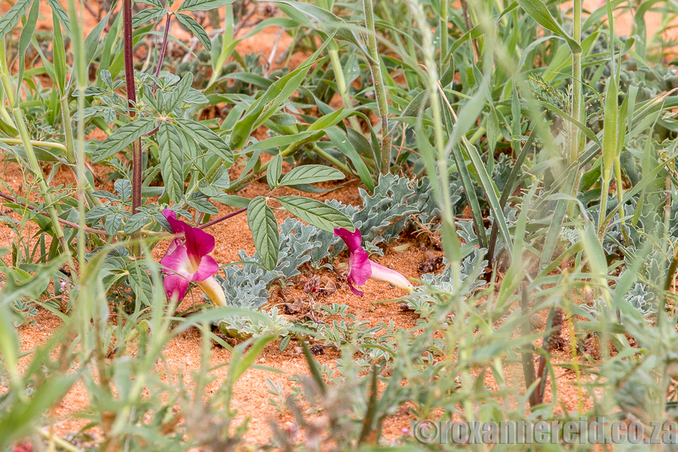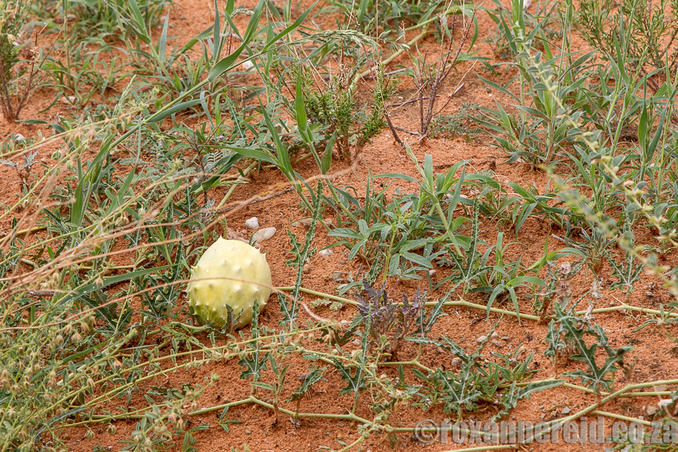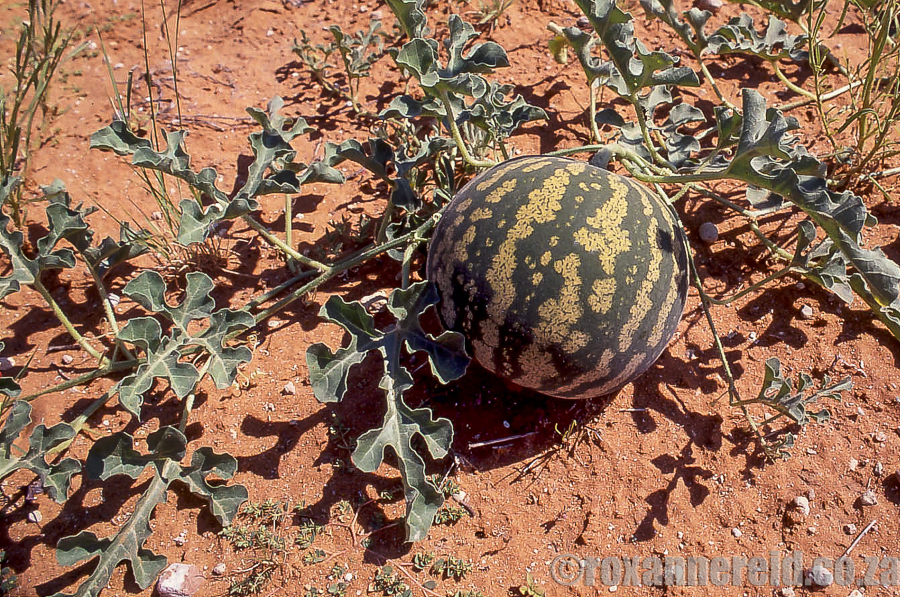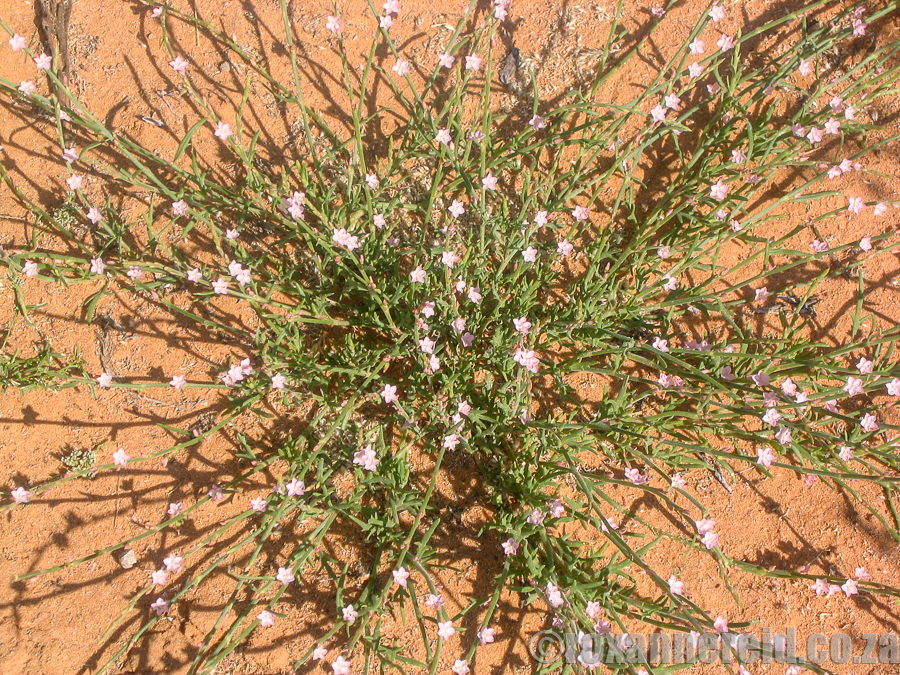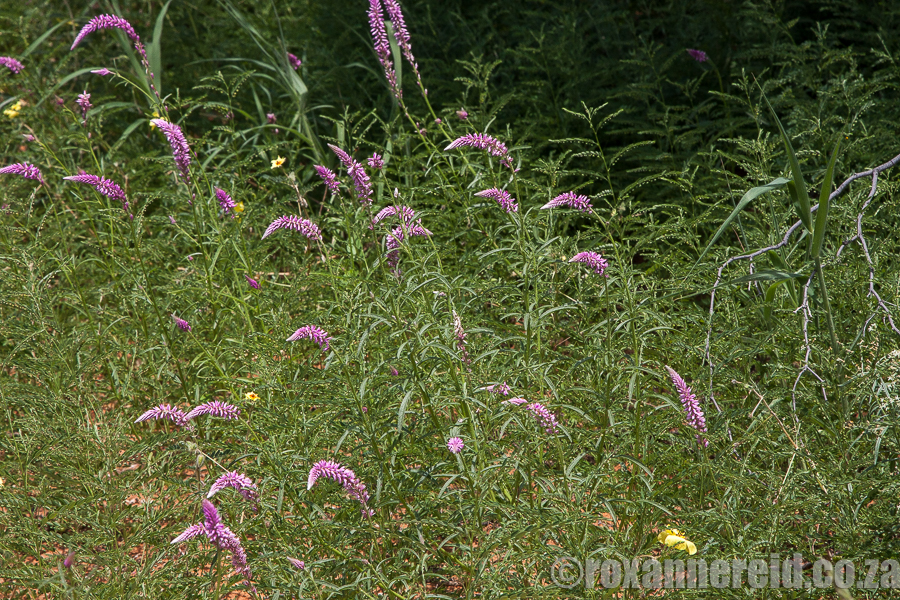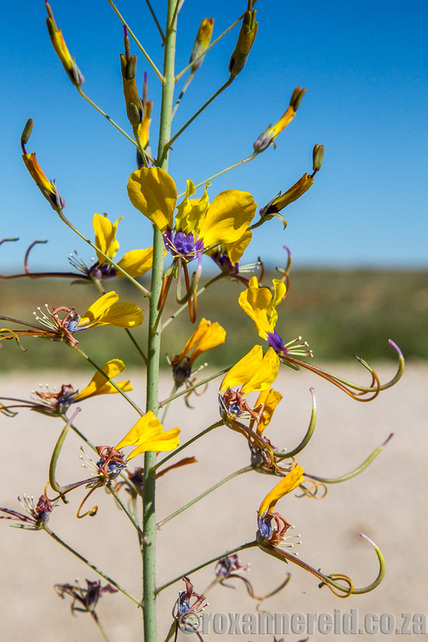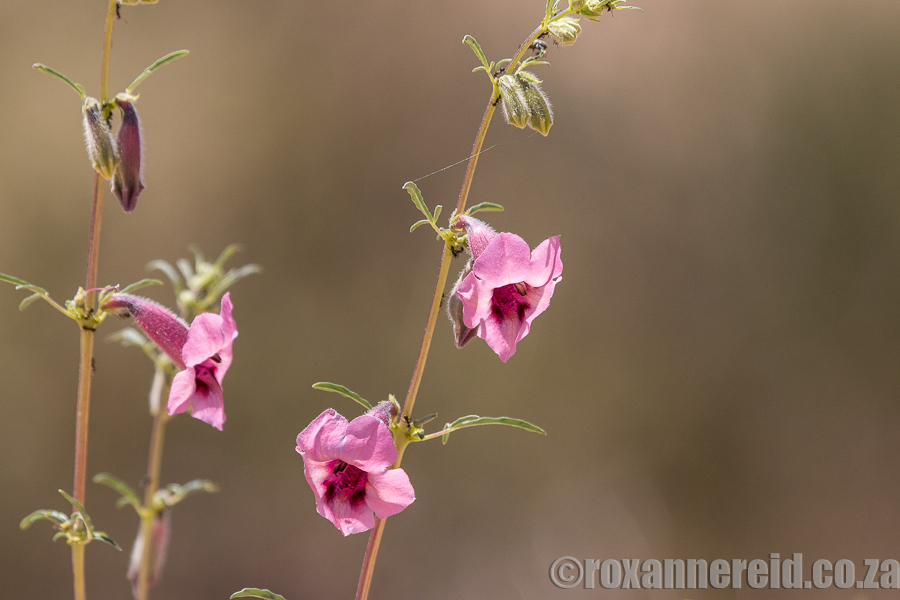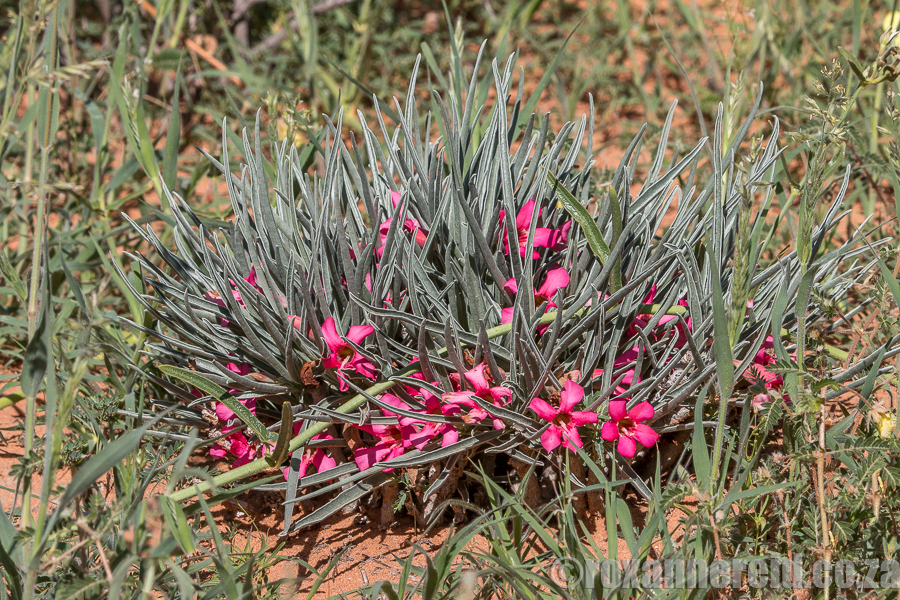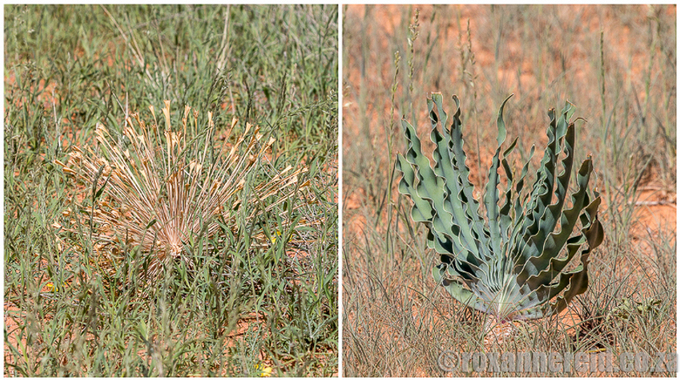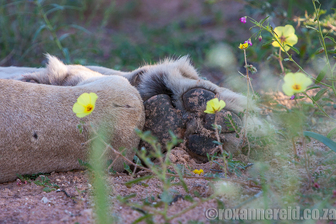
By Roxanne Reid
Anyone who tells you that the Kalahari is just red sand and lions either hasn’t visited or simply wasn’t concentrating. In fact, it’s full of fascinating small creatures like whistling rats and barking geckos. After good rain in summer the dunes are dressed in a jacket of green grass and a throng of colourful flowers will just about slap you in the face. This, then, is the Kalahari in bloom.
Anyone who tells you that the Kalahari is just red sand and lions either hasn’t visited or simply wasn’t concentrating. In fact, it’s full of fascinating small creatures like whistling rats and barking geckos. After good rain in summer the dunes are dressed in a jacket of green grass and a throng of colourful flowers will just about slap you in the face. This, then, is the Kalahari in bloom.
When we visited the Kgalagadi Transfrontier Park in late summer, recent rains had painted the veld with a rainbow of flowers. As always, we loved watching big cats, meerkat and a wealth of smaller Kalahari creatures like beetles and butterflies, spiders and scorpions. But it was our flower safari that gave us the biggest kick because it doesn’t happen every year and we clearly remembered the previous summer’s brittle brownness.
My plant bible is Flowering Plants of the Kalahari Dunes by Noel van Rooyen with Hugo Bezuidenhout and Emmerentia de Kock (Ekotrust, 2001), bought years ago from the shop at Twee Rivieren camp. The author tells me it's currently out of print but it will be going digital sometime in the future, so watch out for it.
My copy is dog-eared with use because once you lock down the trees, you start exploring the shrubs. Once you learn some of the shrubs, you want to identify grasses and bulbs and creepers – and so it continues. It has given us endless hours of fun – although I admit we’ve sometimes had to look up the same plants again and again before their identity becomes cemented in our brains.
My copy is dog-eared with use because once you lock down the trees, you start exploring the shrubs. Once you learn some of the shrubs, you want to identify grasses and bulbs and creepers – and so it continues. It has given us endless hours of fun – although I admit we’ve sometimes had to look up the same plants again and again before their identity becomes cemented in our brains.
Here in the Kgalagadi every plant – be it tree, grass, bush, bulb or creeper – has a Latin/scientific name and at least one, if not two or three Afrikaans names. But for many of them you might be hard-pressed to discover a single English common name.
Afrikaans names can be evocative. Think seeroogblom (sore eye lily), kopseerblom (headache flower), elandsertjie (eland’s pea), duifie doring (dove’s thorn) or withondebossie (white dog bush). Or they’re as simple as schoolboy logic: bloublom (blue flower), soetdoring (sweet thorn) or gifbol (poison bulb).
Afrikaans names can be evocative. Think seeroogblom (sore eye lily), kopseerblom (headache flower), elandsertjie (eland’s pea), duifie doring (dove’s thorn) or withondebossie (white dog bush). Or they’re as simple as schoolboy logic: bloublom (blue flower), soetdoring (sweet thorn) or gifbol (poison bulb).
Some of them provide food for the Kalahari’s animals, others have medicinal uses the San have known about for more years than your great-grandfather has been alive. And I have no doubt that some are still to be discovered and documented by science.
Have a look at some of these beauties.
Driedoring / three thorn (Rhigozum trichotomum)
Have a look at some of these beauties.
Driedoring / three thorn (Rhigozum trichotomum)
This woody and thorny shrub occurs all over the Kgalagadi although it’s apparently not very yummy for animals. The pinkish-white flowers are a different story and springbok are happy to add them to their menu. They bloom in spring or after rainfall, giving the spiky shrub a much softer appearance. In dry times, the driedoring sheds its leaves and looks dead. The San use the straight stems as arrow shafts.
Springbokopslag (Indigofera alternans)
Springbokopslag (Indigofera alternans)
Also called the skaapertjie (sheep’s pea) this creeping plant has leaves that are grey-green below and covered with little hairs. The deep-pink or reddish flowers appear from summer into autumn.
Wild senna / swartstormbossie (Senna italica subsp. arachoides)
Wild senna / swartstormbossie (Senna italica subsp. arachoides)
In summer, especially after good rains, this ground creeper has bright yellow flowers with brown veins and the flowers grow upright like candles in the sand. A root infusion is used to treat stomach ailments or as a laxative, while the seeds can be used as a coffee substitute.
Devil’s thorn / dubbeltjie (Tribulus zeyheri)
Devil’s thorn / dubbeltjie (Tribulus zeyheri)
This annual has light yellow flowers in summer (yes, and thorns!), especially after good rains. It’s the most widespread and noticeable of all the Kalahari creepers, growing by the roadside in the riverbeds and up the dune slopes, as well as in necklaces around the base of trees like the camel thorn. Animals eat the plants and they’re used medicinally for rheumatism.
Devil’s claw / duiwelsklou (Harpagophytum procumbens)
Devil’s claw / duiwelsklou (Harpagophytum procumbens)
This ground creeping plant with bluish-green leaves has deep pinkish-red tubular flowers with yellow centres. It flowers in late summer and the fruit has vicious barbs that attach themselves to animal’s hooves as a means of dispersal. The roots and tubers are used for ailments as diverse as disorders of the intestines, gall-bladder and kidneys, as well as diabetes, gout and arthritis.
Gemsbok cucumber (Acanthosicyos naudinianus)
Gemsbok cucumber (Acanthosicyos naudinianus)
This herb with a yellow summer flower has a large tap root that goes 1.5 metres into the sand. Despite its bitterness the spiny fruit’s moisture makes it a favourite with porcupines, springbok and gemsbok. Rodents and insects drink the water that gathers in old shells after rain.
Tsamma melon (Citrullus lanatus)
Tsamma melon (Citrullus lanatus)
The round tsamma fruit is green, mottled with darker green much like a watermelon. Unlike a watermelon, though, it’s fairly tasteless but since it is 90-95% moisture it’s the main source of water during dry times. The seeds can be crushed to a powder and made into porridge. In dry years there are hardly any tsammas, but after unusually high rainfall in 2000 more than 15 000 per hectare were counted in the park.
Salt of the tortoise / menssuring (Oxygonum delagoense)
Salt of the tortoise / menssuring (Oxygonum delagoense)
This fleshy annual herb produces small, delicate white or pinkish-mauve flowers in summer. The leaves and stems have a refreshingly acidic taste and lots of moisture – a kind of Kalahari lemonade.
Cat’s tail / katstert (Hermbstaedtia fleckii)
Cat’s tail / katstert (Hermbstaedtia fleckii)
This summer flowering annual stands up to 600mm tall, with spikes of pinkish or mauve flowers. They are at their most conspicuous after good rains. A Bushman guide once told me, wrinkling his nose, that they have no use, neither eaten by animals nor with any medicinal value. I love them just for being pretty.
Yellow mouse whiskers / oorpynpeultjie (Cleome angustifolia)
Yellow mouse whiskers / oorpynpeultjie (Cleome angustifolia)
Yellow flowers with a purple base are produced on slender stems from summer till autumn. They appear in large numbers after good rain. The wind was blowing at Auchterlonie picnic site when we photographed this one so I held it by the stem to steady it. When I took my fingers away they were covered in the dark stinky pasting of a brown hyena – not nearly as nice as the flower.
Thunderbolt flower / brandboontjie (Sesamum triphyllum)
Thunderbolt flower / brandboontjie (Sesamum triphyllum)
Erect stems up to 1.5m tall have tubular purple flowers from summer to autumn. It’s the ultimate opportunist – it starts its life cycle as soon as good rains fall. Also known as wild sesame, its leaves are an aphrodisiac, its roots a remedy against snakebite.
Bitterkambro (Adenium oleifolium)
Bitterkambro (Adenium oleifolium)
This succulent small shrub with grey-green hairy leaves has showy bright pink flowers in early summer, though in mid March we still found lots of them clustered on calcareous outcrops along the Auob riverbed. It’s one of the ingredients in arrow poison, and dried powder made from the tuber is applied to wounds, snake bites and scorpion stings.
Bushman poison weed / gifbol (Boophone disticha)
Bushman poison weed / gifbol (Boophone disticha)
The name is a nod to the use of its poisonous bulb for arrow poison. A deep-pink flower on a fat stem grows before the leaves appear in their characteristic fan-shaped pattern (above right). When dry, the fruiting head (above left) becomes what we know as a tumble weed, rolling about in the wind to disperse its seeds. They flower in spring and early summer.
Still think the Kgalagadi is nothing but lions and red sand? Thought not.
You may also like:
Travels in the Kalahari
Copyright © Roxanne Reid - No words or photographs on this site may be used without permission from roxannereid.co.za
Still think the Kgalagadi is nothing but lions and red sand? Thought not.
You may also like:
Travels in the Kalahari
Copyright © Roxanne Reid - No words or photographs on this site may be used without permission from roxannereid.co.za


